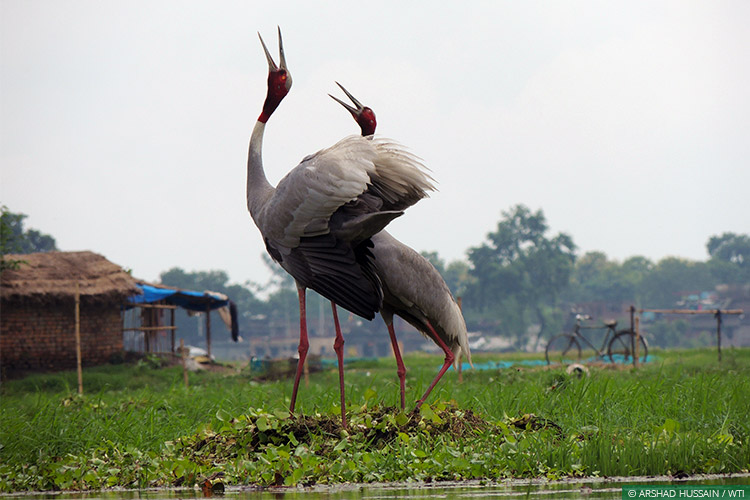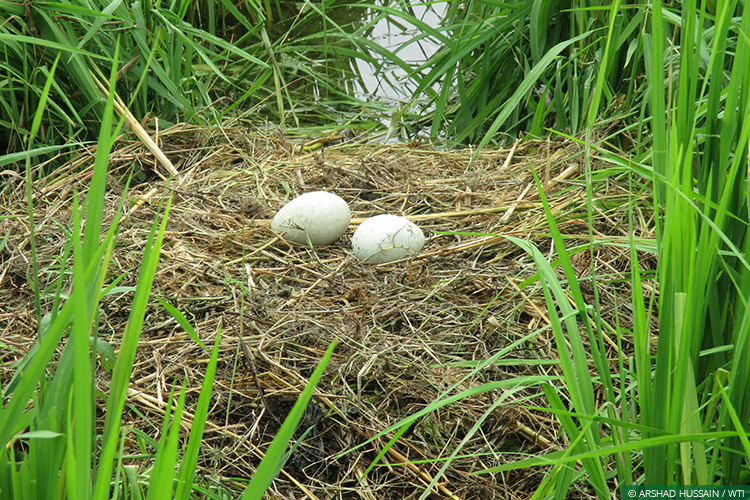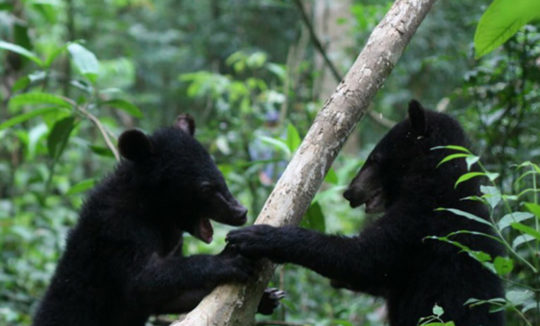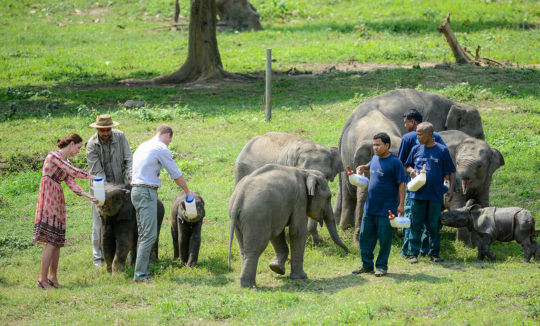Project Info
Project Description
The Sarus Crane’s joyful dance in the agricultural flatlands of eastern Uttar Pradesh is largely due to the efforts of the Sarus Crane Conservation Project. This initiative, managed by WTI in partnership with the Uttar Pradesh Forest Department and supported by Tata Trusts and World Land Trust spans 10 districts across the state. The project works with local community volunteers, and village wetland conservation and management committees which are comprised of community members who have without financial inducement, stepped forward to conserve this iconic bird and the wetlands that sustain it.
Uttar Pradesh is a stronghold of the sarus crane, India’s only resident breeding crane and the world’s tallest flying bird. There is an estimated population of over 13,000 individuals here and the sarus has been designated the official State Bird. According to a survey by the Wildlife Institute of India, 73% of this population is concentrated in the western districts of Mainpuri, Etawah, Etah and Aligarh.
 Wildlife in tamed lands: Sarus cranes perform a courtship dance near a natural wetland surrounded by farmlands | Photo by Arshad Hussain/ WTI
Wildlife in tamed lands: Sarus cranes perform a courtship dance near a natural wetland surrounded by farmlands | Photo by Arshad Hussain/ WTI
Reports of a significant population in the farmlands of Eastern UP first came in from field representatives of Tata Trusts, who have been working with the farmers in the area on sustainable agricultural practices since 2010. This is when Tata Trusts and WTI collaborated thereby incepting the Sarus Crane Conservation Project in 2013.
The draining and 'reclamation' of natural wetlands has forced the sarus crane onto flooded croplands
The presence of sarus cranes on farmlands is in itself unsurprising. The widespread draining and ‘reclamation’ of wetlands for agriculture or infrastructure development has forced the bird onto flooded croplands, particularly rice paddy fields, which provide an approximation of its natural habitat. The sarus, though, asserts its preference when the nesting season comes around every year. The project’s findings show that 80 per cent of their nesting sites fall within four to five kilometers of the remaining natural inland wetlands, such as lakes, ponds and oxbow lakes, which lie in the midst of agricultural wetlands.
These small wetlands are critical for the sarus and other avifauna in the region. They also provide ecological services such as groundwater recharge, water purification, moderation of both flood and drought conditions and preservation of biodiversity. Yet they are, for the most part, unnoticed and neglected. The 30 water bodies identified in eastern UP as Important Sarus Wetland Sites occupy about 100 sq km (9561 ha) – yet 75% of this is not part of any Protected Area or larger landscape-level conservation plan.
 A sarus nest on the margins of a paddy field in eastern Uttar Pradesh (nest photographs are taken for documentation purposes only during the monitoring process, and without disturbing the nest, birds or chicks.) | Photo by Arshad Hussain/ WTI
A sarus nest on the margins of a paddy field in eastern Uttar Pradesh (nest photographs are taken for documentation purposes only during the monitoring process, and without disturbing the nest, birds or chicks.) | Photo by Arshad Hussain/ WTI
Before 2019, the project objective was to primarily conserve the sarus crane that resided in agricultural fields and mosaics of wetland habitats, outside of protected areas. However, post 2019, the project had a broader vision as the focal point became the securement of wetlands in Eastern Uttar Pradesh, which are not only a key habitat for this species but are also a critical ecosystem, supporting biodiversity as well as local communities.
A total of 50 wetlands were identified across the 10 project districts in Eastern Uttar Pradesh. The project has collaborated with the Uttar Pradesh State Wetland Authority (UPSWA) and is assisting them in implementing activities prerequisite for the notification of wetlands in the project district as Wetlands of National Importance under the Wetlands (Conservation and Management) Rules, 2017. Brief documents, containing the site characteristics for each of the wetlands, biodiversity present, the ecosystem services being provided by the wetland as well as usages by the local communities and the threats being faced by the wetland along with maps have been prepared for all the 50 project wetland sites. The notification of these wetlands is still in process. Once notified as a wetland of national importance, the wetlands will be legally protected against certain activities that are detrimental to the ecosystem.
In addition to this, every year the project field team conducts the Sarus Congregation Site Survey in the months of May/June when the sarus cranes are more concentrated around the wetland sites and seasonal water bodies such as canals/streams/ponds/water-logged areas. The aim is to assess their population in the 10 project districts. The surveyors are selected from among the Sarus Mitras (Volunteers), Village Wetlands Management Committee members and NGO field workers from the project districts.

The Sarus population recorded over the last decade
In order to safeguard the Sarus population and to ensure that it increases, it is necessary to protect their nests and safeguard their chicks during the breeding season. The nest monitoring is conducted across the nesting sites every month during the breeding period in all the project districts. The Sarus Mitras (Volunteers), farmers, members of the Village Wetlands Management Committees and the Grassroots NGO staff, all work to protect and monitor the sarus crane nests. The monitoring helps to create awareness among the community members about the need to protect the nests and their chicks and it ensures that the population of the sarus crane increases by reducing/controlling the direct or indirect threats such as poaching, poisoning, etc.

The Sarus nests protected over the last decade
PARTNERS: Tata Trusts, World Land Trust and Uttar Pradesh Forest Department
PROJECT LEAD: Dr. Samir Kumar Sinha













